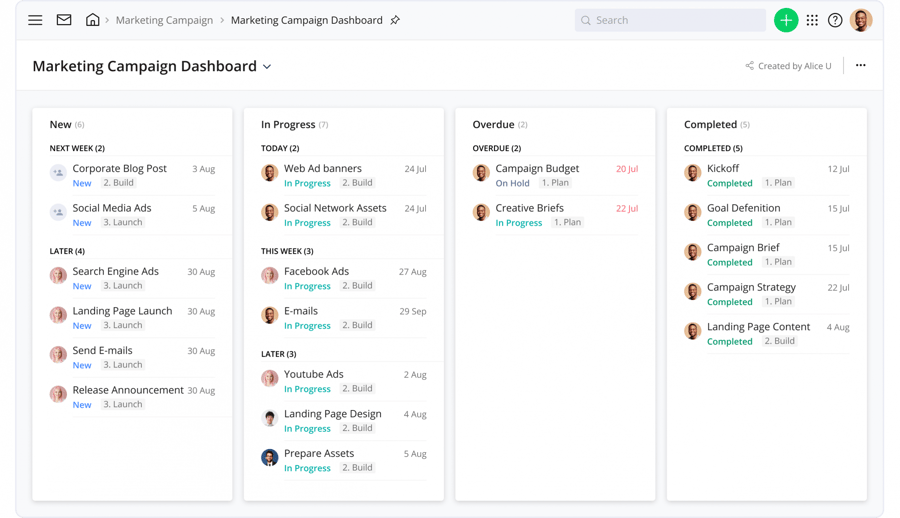Key takeaways:
- What is direct marketing? Direct marketing targets consumers directly, using tailored campaigns across various media to drive immediate responses, unlike broader brand marketing that builds relationships over time.
- How is direct marketing different from brand marketing? Direct marketing is measurable and relies on active outreach with CTAs, while brand marketing is focused on advertising to wider audiences and relies on passive strategies.
- What are effective direct marketing strategies? Successful tactics include word of mouth, engaging direct mail, video ads, and utilizing personal networks for email outreach.
- Can crowdfunding be used in direct marketing? Yes, platforms like Kickstarter can spread awareness and raise funds, as demonstrated by brands like Allbirds.
- What are key factors for successful direct marketing? Understanding your audience, focusing on high ROI leads, and being original in your approach are essential for effective campaigns.
Time and time again, we see that direct marketing is the most effective method successful founders and marketers have used to build their customer bases. In fact, quite a few brands who currently are or have received Series A status can attest to this. And the proof is in the results; direct marketing has won them 10x their initial customer base in relatively short amounts of time. We’ll go deeper into what they did as well as what you can take away from each real-world example. But first, let’s discuss what direct marketing really is.
What is direct marketing?
Direct marketing is just like traditional marketing — it involves creating, sharing, and promoting campaigns. These campaigns are typically spread across all print and digital media channels (depending on the brand, of course). However, the key difference is that direct marketing isn’t about businesses marketing themselves to other businesses. Instead, businesses are marketing themselves to the buyer. They go straight to the source. Hence the term “direct.”
There are different types of direct marketing. You may choose to directly market to all your potential customers. Or you may create focused campaigns that speak to individual segments. Either way, all direct marketing messages will include a strong call-to-action (CTA) that spurs the consumer into a particular response, whether that’s something like downloading an asset or starting a trial.
Direct marketing is often confused with brand marketing. In this video, Seth Godin, the best-selling author and marketing guru, explains the key differences.
Brand marketing is synonymous with advertising. It appeals to a larger audience and relies on inbound strategies to build relationships over time. On the other hand, direct marketing is tailored to its viewers and relies on active outreach to influence leads.
Furthermore, direct marketing is measurable while brand marketing is not. As the saying goes, you can’t manage what you can’t measure. And for Godin, that’s what makes direct marketing the more effective method. Over time, you can analyze audience response, set goals, and make adjustments where needed.
What are some direct marketing examples?
Direct marketing examples include many of the same marketing tools you’re already used to. The messaging you send should speak to a specific type of customer and offer a unique, actionable takeaway. We’ll dissect some examples from leading brands in a minute, but first, here are some things you’ll see or use for direct marketing:
- Digital marketing: Social media, email newsletters, landing pages, SEO strategies, and sponsored advertisements are just some of the direct marketing tools that fall under this umbrella.
- Telemarketing: Sales and outreach through traditional phone calls to cold or warm leads.
- SMS text messaging: Typically opt in, but can be used as part of rewards programs and other targeted campaigns.
- Direct mail: Traditional postcards, letters, and flyers.
It’s not the tool that’s ground-breaking — it’s the way you use it. So without further ado, let’s take a look at some brands that successfully pulled it off and how you can follow in their direct marketing footsteps.
8 examples of using direct marketing to multiply your customer base
A number of generously funded brands use direct marketing to expand their sales. Each company on this list represents one of the many different avenues founders or marketers can take when starting out on their direct marketing journey.
1. Instacart
Instacart is an on-demand grocery delivery service that customers can use to outsource their shopping lists. The fastest option allows users to receive their groceries in as little as an hour.
The company was founded in 2012 and received its Series A status about a year later. Instacart has raised approximately $1.2B and is now valued at over $7.9B.
What They Did: While on a lean budget, Instacart was able to scale efficiently, thanks to direct marketing efforts that achieved two goals, says Nilam Ganenthiran, head of partnerships and strategy at Instacart. The first goal was to improve the consumer experience. The second was to build consumer awareness.
How They Did It: The biggest marketing tactic Instacart used in its early stages is word of mouth. They founded the company in San Francisco and started out delivering in this area. Given the popularity of Uber-for-X services and the genuine market need for the product, their customer base exploded within a year. Along with networking among investors, the brand relied on shoppers in branded T-shirts to pique interest as they went about their grocery runs in the same stores their target market frequented at least once a week, on average.
Main Takeaway: Word of mouth can be a concrete direct marketing strategy if you make sure to place your product or service in an area heavily trafficked by your target demographic. In this example, San Francisco was the perfect place for the app-based company to create a buzz that eventually caught fire in both the B2C and tech worlds.
2. Casper
Casper is a memory foam mattress company with simple options and free delivery right to your front door. They have a generous refund policy that allows shoppers to try the mattress for 100 days before committing to the purchase, which limits hesitation from consumers who were used to testing mattresses in-store.
Although they started out over $100,000 in debt, Casper is now worth $1.1B. Thanks to celebrity unboxings and YouTube, the brand successfully marketed its ground-breaking product.
What They Did: Casper launched a $370 million content marketing strategy, so it’s no surprise they’ve come this far. But what is surprising is how successful their direct mail campaigns have been. In a world that grows increasingly digital, this online mattress store has broken the mold once more with its direct marketing campaigns.
How They Did It: Casper’s approach to direct mail is simple and can easily be repeated across all industries. Their envelopes are brightly colored, the paper is high quality, and each of their mailers represents one genius idea: taking their seemingly intangible offer (a mattress you won’t even see until after your card is charged) and presenting its target audience with a completely tangible piece of direct marketing.
Main Takeaway: Companies that are run entirely online can lack a sense of credibility when starting out. Seeing a piece of paper with the same company’s name arrive in your mailbox makes it easier to trust that this brand is, in fact, real. Not only that, but they’ve also demonstrated how easy the whole process of obtaining their mattress is. You just have to do the same thing you did to get the postcard: check your mail.
3. Harry’s
Harry’s sells personal grooming products and shaving tools through both digital and retail stores. Their subscription model offers a monthly or weekly delivery of products chosen based on the customer’s unique profile and skincare needs.
Since its inception in 2013, the brand has gone to great lengths to ensure that its direct-to-consumer (DTC) product is a success. From buying a razor factory in Germany to running countless successful direct marketing campaigns, Harry’s has built a brand worth $1.4B.
What They Did: According to a case study of their marketing, Harry’s has a model that experts say is easily replicable for e-commerce companies of all sizes. Among their 5-prong marketing approach, their most interesting strategy was their very first email marketing campaign. All 12 of their employees sent emails to everyone they knew in their very own personal and professional networks. In only a week, they grew their customer list to 100,000 subscribers using this incredibly simple direct marketing tactic.
How They Did It: First, they focused on their most immediate network. These leads were practically guaranteed to have a high ROI because they personally knew the employees who reached out to them. From there, they were able to continue forwarding the message to other people in their own network.
Next, they set up a dedicated landing page through a traceable referral link. Then, they made their landing page simple, yet mysterious — offering only a space to input your email and a message about what Harry’s does. Finally, the cherry on top was their incredible giveaway offer: Anyone who shares the landing page on social media receives free products.
Main Takeaway: Even if you can’t afford to just give things away, this Series D company started out by using the resources they already had: friends and family. Besides concentrating on their highest ROI market, they also developed a clever direct marketing funnel using only their email, a landing page, and social media.
4. Allbirds
Allbirds has cornered the market on footwear that’s environmentally friendly and extremely comfortable. Their simple designs and quality materials (including wool and even sugar cane) are a hit among shoe fans who want an easy, lightweight sneaker.
The privately held international brand was founded in 2014 and has since moved from strictly digital sales to brick-and-mortar test stores. Currently valued at roughly $1.4B, Allbirds uses a variety of strategies in their direct marketing campaigns. And according to an analysis of their growth marketing strategy, 40% of Allbirds’ website traffic comes from direct marketing.
What They Did: Despite receiving a large grant to design their product early on, Allbirds ran into some issues that raised the cost of production past their initial funding. That’s when they turned to Kickstarter. Their message was simple — no socks, no smell. In only five days, they raised more than $119,000 and raised interest among investors.
How They Did It: When reaching out to potential leads with their Kickstarter campaign, they kept their message simple — a great product (wool running shoes) with two key benefits that were unique and practical. It’s a simple campaign for a simple solution in a market with increasingly complex products.
Main Takeaway: Besides having a product that inverts expectations, founders and marketers looking to emulate Allbird’s direct marketing success can easily turn to crowdfunding as a method for increasing capital as well as spreading the word. Since platforms like Kickstarter are made to be shareable, spreading the word is easy.
5. Bonobos
A subsidiary of Walmart, Bonobos quickly became an e-commerce giant, selling men’s clothing and accessories that fit better and cost less. Although they’re backed by a giant corporation, Bonobos still had to use direct marketing to increase their customer base.
Launched in 2007, the online retailer is now on to Series D funding. And despite inspiring a movement of anti-Bonobos fashion startups, they were valued at $300M before Walmart came in.
What They Did: When it comes to their direct marketing, Bonobos demonstrates a strong understanding of both experience and value creation. Much of their products’ success comes from their ability to personalize the individual fit. They carried this same principle over to their direct marketing strategy, customizing the outreach tools to match the desires of their consumers. In the real world, this translates to an impressive amount of catalog marketing.
How They Did It: Catalog marketing might not seem like an effective or cost-efficient direct marketing idea for most businesses — and that’s exactly the point. One of the things Bonobos knows for sure is that their audience is old school. Bonobos used to do custom measurements in empty storefronts where customers leave without products in their hands. It reminded their customers of an earlier time when tailored pieces were expected in men’s fashion. Capitalizing on this nostalgia, Bonobos made a point to distribute another form of direct marketing that many of their customers would appreciate: supposedly outdated, glossy, and luxurious catalogs.
Main Takeaway: The tools you use to support your direct marketing campaigns should represent your brand as well as the values your customers’ share. What works for one brand may not work for another, so be sure to keep your unique target audience in mind before you launch your next direct marketing campaign.
6. BarkBox
BarkBox is a subscription service for the hairiest and perhaps most important member of your family — your dog. Their curated and themed collection of full-sized dog products ships monthly. They also offer tiered membership, depending on how many products you’d like to receive.
Founded in 2011, BarkBox now has an impressive 600,000 monthly subscribers as well as an estimated valuation of $150M to $200M.
What They Did: Although it was heavily invested in Facebook ads, BarkBox is yet another brand that has turned to more traditional forms of outreach and direct marketing to continue building its empire. In November of 2018, BarkBox ran its first direct-response ad on TV (which you can now watch on YouTube). Because they created the ad in-house, it cost a mere fraction of what an agency would charge. All in all, the ad played a significant role in doubling BarkBox’s yearly revenue from $100 million to $200 million in one year.
How They Did It: Their ad features happy owners and dogs receiving their goodies in the mail. Their smiles and laughter really say it all — BarkBox makes you and your best friend feel great. They also include actors that represent their three primary target demographics. The ad offers a quick voiceover pitch that includes the product’s cost and value. To top it all off, their final CTA asks the viewer to sign up today to receive free shipping on orders.
Main Takeaway: Video creation is more accessible and affordable than ever. The content can be tailored to fit your audience through your choices of actors, settings, music, and text. To make your campaign more active, always include a special offer (in this case, it was free shipping). And if you can’t afford to run your spot on TV, there are plenty of ways to share it with cold and warm leads through your email newsletter and/or social media direct messaging.
7. Bombas
Originally known as a sock company, Bombas has recently expanded its line of comfort goods to include high-quality T-shirts as well. Charity is a large part of their business model. For every unit sold, Bombas donates a unique piece of clothing to a homeless shelter.
You’d think socks would be a tough product to sell millions of, but the mission of this seven-year-old brand made all the difference. Their one-for-one business model has netted Bombas a worth of around $100M.
What They Did: CMO Kate Huyett notes that they saw the best results from two direct marketing campaigns. The first was on national cable, and the second was on YouTube. But the most interesting difference between the results Bombas saw from these two platforms is the lifetime value of their YouTube ads. Not only were they receiving more first-time orders from brand-new Bombas customers from their YouTube ad than on any other media type, but they were also seeing more return business from each YouTube-generated lead.
How They Did It: Bombas continues to make direct marketing videos that entice both views and sales. On one of their more recent YouTube ads, the brand won more than 4 million views for their campaign explaining why Bombas were the most important socks in the world. Not only is it entertaining, it’s also very convincing.
Main Takeaway: Identify what your customers value most then align your direct marketing efforts with that message. Even if your brand isn’t linked to a charity, there are plenty of ways to show how your product is doing good in the world, which is why many founders and startup marketers got into the industry in the first place!
Things to remember about direct marketing strategies
Customer outreach has proven to be highly effective for some of the leading brands out there today. Whether they’re still Series A or they’ve graduated to another tier, the examples above lay out some of the many ways other founders and marketers can apply direct marketing to their own company. Let’s go over the major patterns and how you can use them:
- Understand your audience. Whether it’s their favorite grocery store, app, charitable cause, or a nostalgic decade, the things that make your target demographic unique will help propel your direct marketing campaigns. Even the most minute details can provide inspiration.
- Focus on high ROI leads. Even if you only have your own network to sell to at first, your direct marketing campaign can have a significant impact. Ask your contacts to share your email, promote your crowd fundraiser, or something else entirely. You can accomplish a lot simply by reaching out to your biggest supporters first.
- Be original. Direct marketing that works for one company may not work for another. If print mailers help your customers trust you or make them feel sentimental, great. Or if they watch a lot of TV but you can’t get an agency to produce an ad, do it yourself.
Want to plan your own direct marketing campaign?
Wrike can help power direct marketing campaigns for companies at any stage, whether you’re a startup or an established brand. Wrike’s marketing campaign template allows you to plan, launch, and track the performance of any marketing campaign, hitting the ground running and avoiding setting up processes from scratch every time. Organize your campaigns with custom folders, and track performance across all active campaigns using shared dashboards. Try it for free today with a two-week free trial.
Get things done faster with Wrike!
Wrike is a highly flexible collaboration and project management solution for teams of all sizes.








